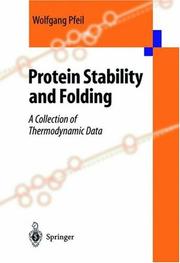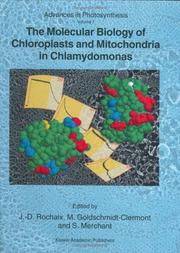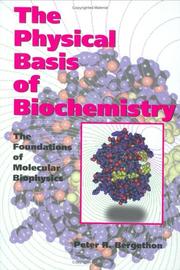| Listing 1 - 10 of 16 | << page >> |
Sort by
|

ISBN: 0806131225 9780806131221 Year: 1998 Publisher: Norman (Okla.): University of Oklahoma press,
Abstract | Keywords | Export | Availability | Bookmark
 Loading...
Loading...Choose an application
- Reference Manager
- EndNote
- RefWorks (Direct export to RefWorks)
Nuclear physicists --- Medical physics --- Morgan, Karl Ziegler

ISBN: 0683183346 9780683183344 Year: 1998 Publisher: Philadelphia: Lippincott Williams & Wilkins,
Abstract | Keywords | Export | Availability | Bookmark
 Loading...
Loading...Choose an application
- Reference Manager
- EndNote
- RefWorks (Direct export to RefWorks)
Radiology, Medical --- Medical physics --- Health Physics --- Radiation Dosage --- Radiation Protection
Periodical
Year: 1998 Publisher: [Santiago] : Universidad de Chile,
Abstract | Keywords | Export | Availability | Bookmark
 Loading...
Loading...Choose an application
- Reference Manager
- EndNote
- RefWorks (Direct export to RefWorks)
Periodical
Year: 1998 Publisher: [Santiago] : Universidad de Chile,
Abstract | Keywords | Export | Availability | Bookmark
 Loading...
Loading...Choose an application
- Reference Manager
- EndNote
- RefWorks (Direct export to RefWorks)
Periodical
Year: 1998 Publisher: [Santiago] : Universidad de Chile,
Abstract | Keywords | Export | Availability | Bookmark
 Loading...
Loading...Choose an application
- Reference Manager
- EndNote
- RefWorks (Direct export to RefWorks)

ISBN: 3540637176 3642637167 3642587607 Year: 1998 Publisher: Berlin : Springer,
Abstract | Keywords | Export | Availability | Bookmark
 Loading...
Loading...Choose an application
- Reference Manager
- EndNote
- RefWorks (Direct export to RefWorks)
Protein folding remains one of the most exclusive problems of modern biochemistry. Structure analysis has given access to the wealth of the molecular architecture of pro teins. As architecture needs static calculations, protein structure is always related to thermodynamic factors that govern folding and stability of a particular folded protein over the non-organized polypeptide chain. During the past decades a huge amount of thermodynamic data related to protein folding and stability has been accumulated. The data are certainly of importance in dechiffring the protein folding problem. At the same time, the data can guide the con struction of modified and newly synthesized proteins with properties optimized for particular application. The intention of this book is a generation of a data collection which makes the vast amount of present data accessible for multidisciplinary research where chemistry, phy sics, biology, and medicine are involved and also pharmaceutical and food research and technology. It took several years to compile all the data and the author wishes to thank everyone who provided data, ideas or even unpublished results. The author is, in particular, indebted to Prof. Wadso (Lund, Sweden) and IUPAC's Steering Committee on Bio physical Chemistry. Furthermore, support by the Deutsche Forschungsgemeinschafi (INK 16 AI-I) is acknowledged.
Chemical thermodynamics --- fysicochemie --- General biochemistry --- 577.112 --- 547.96 --- Proteins --- 547.96 Proteins --- 577.112 Proteins --- Protein folding --- Proteids --- Biomolecules --- Polypeptides --- Proteomics --- Folding of proteins --- Biotechnology --- Stability&delete& --- Tables --- Folding --- Conformation --- Biochemistry. --- Biotechnology. --- Biophysics. --- Biological physics. --- Food—Biotechnology. --- Pharmacy. --- Biochemistry, general. --- Biological and Medical Physics, Biophysics. --- Food Science. --- Chemistry --- Medicine --- Drugs --- Materia medica --- Pharmacology --- Biological physics --- Biology --- Medical sciences --- Physics --- Chemical engineering --- Genetic engineering --- Biological chemistry --- Chemical composition of organisms --- Organisms --- Physiological chemistry --- Composition --- Protein folding. --- Stability --- Tables.
Book
ISBN: 3540628886 3540690387 Year: 1998 Publisher: Berlin ; Heidelberg ; New York Springer Verlag
Abstract | Keywords | Export | Availability | Bookmark
 Loading...
Loading...Choose an application
- Reference Manager
- EndNote
- RefWorks (Direct export to RefWorks)
Biological chemistry is a major frontier of inorganic chemistry. Three special volumes devoted to Metal Sites in Proteins and Models address the questions: How unusual ("entatic") are metal sites in metalloproteins and metalloenzymes compared to those in small coordination complexes? And if they are special, how do polypeptide chains and co-factors control this? The chapters deal with iron, with metal centres acting as Lewis acids, metals in phosphate enzymes, with vanadium, and with the wide variety of transition metal ions which act as redox centres. They illustrate in particular how the combined armoury of genetics and structure determination at the molecular level are providing unprecedented new tools for molecular engineering.
Binding Sites (Biochemistry). --- Metalloenzymes. --- Metallo-enzymen --- Metalloenzymes --- Metalloproteïnen --- Métalloenzymes --- Métalloprotéïnes --- Bioinorganic chemistry. --- Oxidation-reduction reaction. --- Inorganic chemistry. --- Biochemistry. --- Molecular biology. --- Cell biology. --- Biophysics. --- Biological physics. --- Inorganic Chemistry. --- Biochemistry, general. --- Molecular Medicine. --- Cell Biology. --- Biological and Medical Physics, Biophysics. --- Biological physics --- Biology --- Medical sciences --- Physics --- Cell biology --- Cellular biology --- Cells --- Molecular biochemistry --- Molecular biophysics --- Biochemistry --- Biophysics --- Biomolecules --- Systems biology --- Biological chemistry --- Chemical composition of organisms --- Organisms --- Physiological chemistry --- Chemistry --- Inorganic chemistry --- Inorganic compounds --- Composition --- Metalloproteins

ISBN: 354063424X 3540695443 9783540634249 Year: 1998 Volume: 194 Publisher: Berlin: Springer,
Abstract | Keywords | Export | Availability | Bookmark
 Loading...
Loading...Choose an application
- Reference Manager
- EndNote
- RefWorks (Direct export to RefWorks)
"WHAT DOES NOT NEED TO BE BIG, WILL BE SMALL", a word by an engineer at a recent conference on chips technology. This sentence is particularly true for chemistry. Microfabrication technology emerged from microelectronics into areas like mechanics and now chemistry and biology. The engineering of micron and submicron sized features on the surface of silicon, glass and polymers opens a whole new world. Micromotors smaller than human hair have been fabricated and they work fine. It is the declared goal of the authors to bring these different worlds together in this volume. Authors have been carefully chosen to guarantee for the quality of the contents. An engineer, a chemist or a biologist will find new impulses from the various chapters in this book.
Analytical chemistry. --- Chemical engineering. --- Biophysics. --- Biological physics. --- Biochemistry. --- Nanotechnology. --- Analytical Chemistry. --- Industrial Chemistry/Chemical Engineering. --- Biological and Medical Physics, Biophysics. --- Biochemistry, general. --- Molecular technology --- Nanoscale technology --- High technology --- Biological chemistry --- Chemical composition of organisms --- Organisms --- Physiological chemistry --- Biology --- Chemistry --- Medical sciences --- Biological physics --- Physics --- Chemistry, Industrial --- Engineering, Chemical --- Industrial chemistry --- Engineering --- Chemistry, Technical --- Metallurgy --- Analysis, Chemical --- Analytic chemistry --- Chemical analysis --- Chemistry, Analytic --- Composition --- Microchemistry. --- Analysis, Microchemical --- Microanalysis (Chemistry) --- Microchemical analysis --- Analytical chemistry

ISBN: 0306482045 0792351746 Year: 1998 Publisher: Dordrecht Kluwer
Abstract | Keywords | Export | Availability | Bookmark
 Loading...
Loading...Choose an application
- Reference Manager
- EndNote
- RefWorks (Direct export to RefWorks)
Chlamydomonas --- Chloroplasts. --- Mitochondria. --- Photosynthesis --- Molecular biology. --- Molecular aspects. --- Plant physiology. Plant biophysics --- Life sciences. --- Biochemistry. --- Plant science. --- Botany. --- Plant physiology. --- Biophysics. --- Biological physics. --- Life Sciences. --- Plant Physiology. --- Biochemistry, general. --- Plant Sciences. --- Biophysics and Biological Physics. --- Biological and Medical Physics, Biophysics. --- Biological physics --- Biology --- Medical sciences --- Physics --- Botanical science --- Phytobiology --- Phytography --- Phytology --- Plant biology --- Plant science --- Natural history --- Plants --- Biological chemistry --- Chemical composition of organisms --- Organisms --- Physiological chemistry --- Chemistry --- Botany --- Physiology --- Composition --- Floristic botany --- Chloroplastids --- Chromatophores --- Plastids --- Chondriosomes --- Cell organelles --- Protoplasm --- Chlamidomonas --- Chlamydomonadaceae --- Molecular biology --- Molecular biochemistry --- Molecular biophysics --- Biochemistry --- Biophysics --- Biomolecules --- Systems biology --- CHLAMYDOMONAS --- CHLOROPLASTS --- MOLECULAR BIOLOGY --- MITOCHONDRIA --- PHOTOSYNTHESIS

ISBN: 0387982620 1475729650 1475729634 Year: 1998 Publisher: New York Springer
Abstract | Keywords | Export | Availability | Bookmark
 Loading...
Loading...Choose an application
- Reference Manager
- EndNote
- RefWorks (Direct export to RefWorks)
The objective of this book is to provide a unifying approach to the study of biophysical chemistry for the advanced undergraduate who has had a year of physics, organic chem istry, calculus, and biology. This book began as a revised edition of Biophysical Chemistry: Molecules to Membranes, which Elizabeth Simons and I coauthored. That short volume was written in an attempt to provide a concise text for a one-semester course in biophysical chemistry at the graduate level. The experience of teaching biophysical chemistry to bi ologically oriented students over the last decade has made it clear that the subject requires a more fundamental text that unifies the many threads of modem science: physics, chem istry, biology, mathematics, and statistics. This book represents that effort. This volume is not a treatment of modem biophysical chemistry with its rich history and many contro versies, although a book on that topic is also needed. The Physical Basis of Biochemistry is an introduction to the philosophy and practice of an interdisciplinary field in which biological systems are explored using the quantitative perspective of the physical scientist. I have three primary objectives in this volume: one, to provide a unifying picture of the interdisciplinary threads from which the tapestry of biophysical studies is woven; two, to provide an insight into the power of the modeling approach to scientific investigation; and three, to communicate a sense of excitement for the activity and wholesome argument that characterize this field of study.
General biophysics --- 577.32 --- Biochemistry --- Biophysics --- Chemistry, Physical and theoretical --- Chemistry, Theoretical --- Physical chemistry --- Theoretical chemistry --- Chemistry --- Biological physics --- Biology --- Medical sciences --- Physics --- Biological chemistry --- Chemical composition of organisms --- Organisms --- Physiological chemistry --- Molecular biophysics --- Composition --- 577.32 Molecular biophysics --- Biophysique --- Chimie physique et théorique --- #WSCH:WBIO --- Chemistry, Physical and theoretical. --- Chimie physique et théorique --- #WSCH:FYS3 --- General biochemistry --- Molecular biology --- Biochemistry. --- Biophysics. --- Basic Sciences. Chemistry --- Biochimie --- Biological physics. --- Bioorganic chemistry. --- Physical chemistry. --- Biological and Medical Physics, Biophysics. --- Biochemistry, general. --- Bioorganic Chemistry. --- Physical Chemistry. --- Bio-organic chemistry --- Biological organic chemistry --- Chemistry, Organic
| Listing 1 - 10 of 16 | << page >> |
Sort by
|

 Search
Search Feedback
Feedback About UniCat
About UniCat  Help
Help News
News